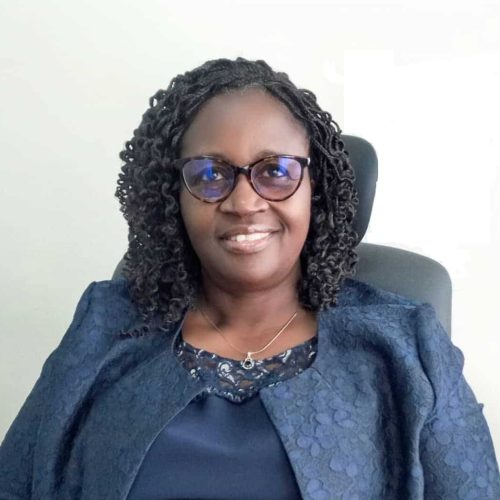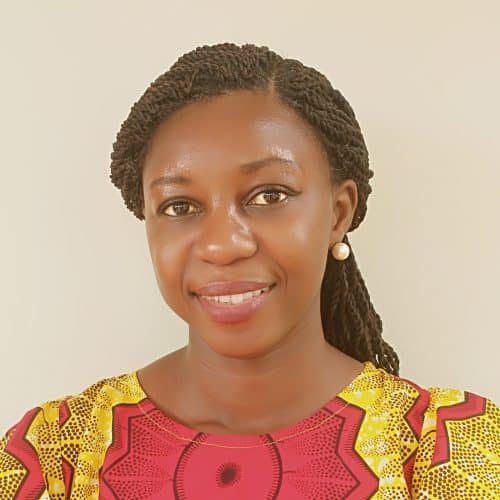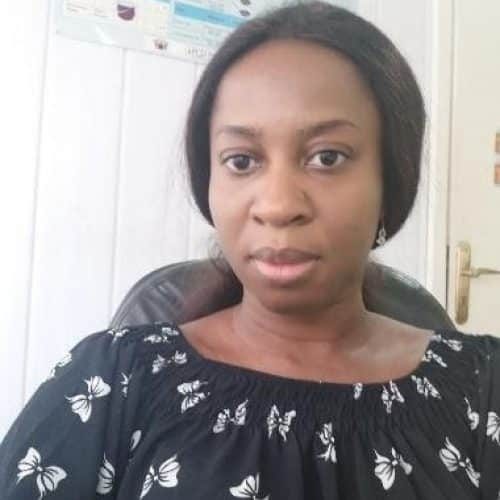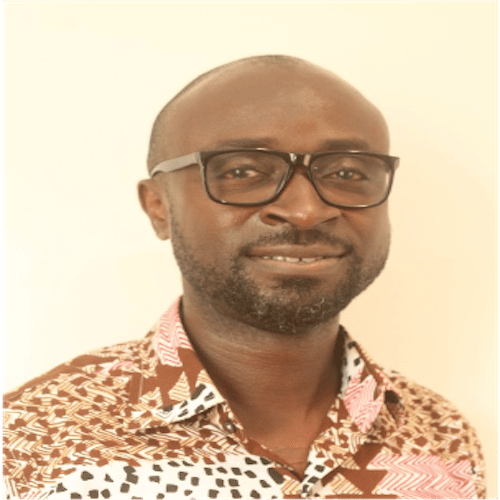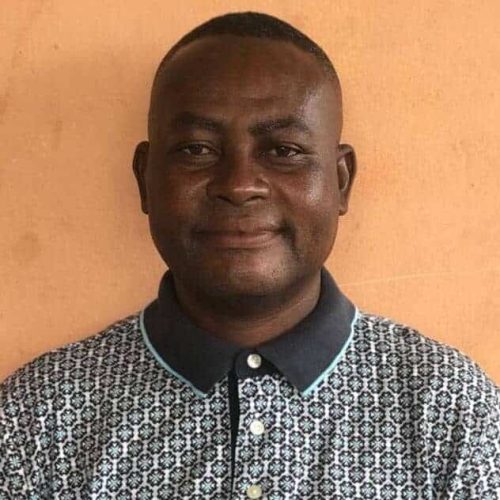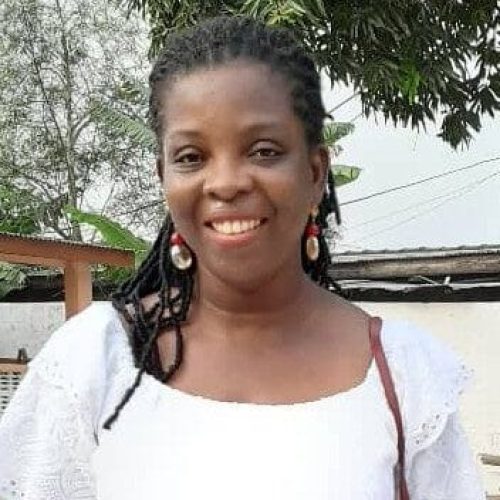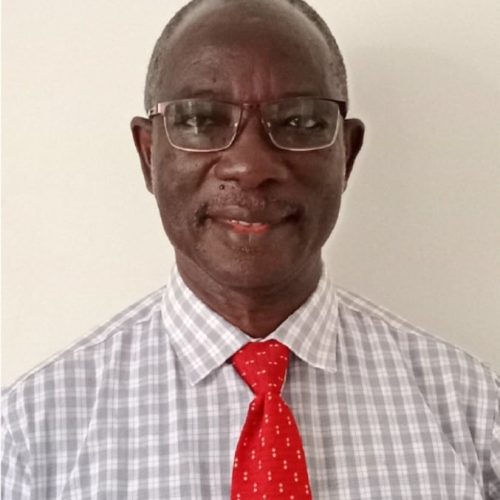NTD Research Group


Neglected Tropical Diseases (NTDs) are a group of infectious diseases that affect more than one billion people worldwide, mainly in remote settings in low-income countries. They affect the poorest and most vulnerable in society and perpetuate the cycle of poverty. Ghana is endemic for 14 of the 20 NTDs identified by WHO and these include Lymphatic Filariasis (elephantiasis), Onchocerciasis (river blindness), Schistosomiasis (urogenital and/or intestinal), Soil-transmitted helminths (worms), Buruli ulcer, Guinea worm, Leprosy, Yaws, human African trypanosomiasis (sleeping sickness), Rabies, Cutaneous Leishmaniasis, Trachoma, Scabies and Snakebite envenoming.
The NTDs Research Group of the Department of Parasitology is actively involved in related studies in the areas of epidemiology, control, transmission assessment, diagnostics, disease management and surveillance. The Department employs traditional methods in parasitology, entomology, malacology and taxonomic approaches, as well as molecular biology and immunology tools in its research and diagnosis of NTDs. The NTDs mostly worked on in the Department include lymphatic filariasis (LF), onchocerciasis, schistosomiasis, soil-transmitted helminthiasis, Human African Trypanosomiasis, Leishmaniasis, Buruli ulcer and Snakebite envenoming. In all of these, the Department collaborates with the NTD programme of the Ghana Health Service, and various local and international collaborators. Capacity building is a strong component of our activities most of which are carried out though the Lymphatic Filariasis Support Centre for Africa (LFSCA) and the West African Centre for International Parasite Control (WACIPAC), affiliated centres of the Department.
Work done on Lymphatic filariasis by the NTD group have been critical in informing the global programme for the elimination of elephantiasis, as well as, defining surveillance and monitoring strategies. Current activities are focussed on addressing the endgame challenges to LF elimination as a disease of public health importance. The NTD group also works to assess the transmission of the disease and the infectivity in the vector mosquitoes.
On onchocerciasis, the NTD group works to assess the effectiveness of treatment interventions, development of molecular markers for identifying sub-optimal parasite population, delineation of onchocerciasis transmission zones and evaluation of new methods for the diagnosis of the disease. Current research activities are focused on identifying genetic differences between parasite and vector (S. damnosum) populations collected from different ecological zones in Ghana and using the genetic data to delineate transmission zones of the disease. Research work also include collection of historic onchocerciasis data (epidemiological and entomological) to update a two-patch onchocerciasis model. Additional research activities are focused on obtaining data on human and vector movement activities within high (treated) and low (untreated) onchocerciasis endemic communities and using these data to update mathematical models for decision making on mass treatment with ivermectin within the low (untreated) endemic settings. We are also involved in the evaluation of new RDTs for the diagnosis of the disease.
Schistosomiasis is the disease we have worked on the most. We support the NTD programme in control activities such as building the capacity of field staff for accurate diagnosis of the infection, developing and evaluating new diagnostic tools, designing new and improved interventions, and conducting community sensitization to inform attitude change. We also offer technical support to national control programmes in disease surveillance, monitoring and evaluation, school- and community-based operational research, skills-based health education and snail hosts control. Work done by the NTD group contributed to the development of the guidelines for mollusciciding by the WHO, published in 2017 to help eliminate the intermediate snail hosts because drug treatment of the infection alone is not enough for elimination. Our recent studies show that there could be a hybrid of the schistosome species that hitherto infected cattle (S. bovis) and humans (S. haematobium) which we suspect may affect the effectiveness of the current drug of choice (Praziquantel) for clearing the parasites. Currently, we are investigating that to ascertain the nature of the hybrid and how it responds to the drug used for treatment, among others. As reports indicate possible drug resistance, we are also investigating medicinal plants as alternative drugs to supplement the drug of choice.
The major Soil-transmitted Helminths (STH) in Ghana are Ascaris lumbricoides (roundworm), Trichuris trichiura (whipworm), Necator americanus/Ancylostoma duodenale (Hookworms) and Strongyloides stercoralis (threadworm). The NTD group has been involved in control activities, designing new and improved interventions, conducting community sensitization to inform attitude change and skills-based health education. With support from the Japan International Corporation Agency (JICA), an educative flip chart titled "Worms Attack Mr Kwasi's Family" (available online at https://www.who.int/intestinal_worms/resources/WACIPAC_flip_chart_STH_Eng.pdf) and a game called “Worms and Ladders” for communal learning were produced. The NTD group has also been investigating Hookworms infections in Ghana to establish trends for the formulation of more effective treatment regimens and control strategies.
Research in Human African Trypanosomiasis supports national surveillance activities and diagnosis. Research on a new and safe drug for HAT is ongoing. Recently, the activities of some Ghanaian medicinal plants extracts against Trypanosomes was investigated and yielded novel compounds that have been patented (https://patents.justia.com/patent/20150191484; https://uspto.report/patent/app/20150191484).
Cutaneous leishmaniasis studies by the NTD group focus on disease transmission, distribution and identifying insect vectors involved in the transmission of the disease. Through collaborative studies with NAMRU 3, USA, a new species of Leishmania spp was isolated (https://doi.org/10.1016/j.ijpara.2015.05.001). Recent epidemiological investigations have identified new foci of infection in the country.
Snakebite envenoming is an important human-wildlife conflict, with significant socio-economic loss, morbidity, and mortality. Since the mid-1990s we have been involved in testing snake antivenom products (serum and herbal preparations) to ascertain the neutralizing potency for approval by appropriate authorities to be marketed in Ghana. The NTD group in collaboration with international partners, has also served as a hub for hosting annual symposia on snakebite envenoming management for service providers across the country for awareness creation, sensitization and skills training.
Buruli ulcer is a skin disease caused by Mycobacterium ulcerans. Its transmission is poorly understood but linked to freshwater bodies and economic and recreational activities in slow flowing streams. We have been involved in research to identify sources of the Mycobacterium ulcerans in the environment and to understand how it is transmitted within communities; develop rapid tests for early diagnosis of the disease and assess risk factors that predispose people to the disease.
A drug discovery programme was established in the Department, in partnership with Dr Samuel Kwofie of the School of Biomedical Engineering, University of Ghana. The main approach of the Programme is using computer-aided drug discovery and design (CADD) technologies to identify novel compounds with modes of action differing from those of the currently used drugs. The Programme’s focus is on NTDs specifically Buruli ulcer, tuberculosis and soil-transmitted helminthiasis (hookworm, roundworm and whipworm). The rationale for its establishment was the concern that the current drugs have been in use for long periods, which will ultimately lead to reduced efficacies and/or resistance. The conventional approaches to drug discovery are very challenging; expensive, time-consuming process, need several hands, take approximately 15 years to get approval. In addition, it is characterized by a low rate of therapeutic discovery, which in some cases involves screening of thousands of compounds. Moreover, the number of approved drugs is steadily declining because of these challenges, with toxicity accounting for approximately one-third of withdrawals, and the rest mostly due to early-stage terminations that are related to suboptimal efficacy and safety issues. CADD technologies will overcome these research and development (R&D) challenges by reducing costs and making it feasible in developing countries tertiary institutions.
- Population genetic simulations for tools for onchocerciasis control programmes to determine transmission zones: Part 2 Ghana epidemiological and entomological data
- Development and validation of Simulium damnosum genetic makers for surveillance of onchocerciasis in Ghana during the elimination phase of the disease
- Utility of Vector Population Genetics for Delineating O. volvulus transmission: Entomological Component
- Optimizing mass drug administration expansion to low onchocerciasis prevalence settings
- Strategies for the ENdgame: Targeting Infections among Non-adherents in the Elimination of Lymphatic filariasis (SENTINEL)
- Improving Skin NTD surveillance and management: Piloting the use of a mobile phone-based surveillance and management system.
- Noguchi Institute Initiative for the NTDs Elimination (NIINE)
Publications (last 5 years):
2023
- de Souza DK, Addo SO, Desewu K, Nzelu CO, Mosore MT, Nimo-Paintsil S, Attram N, Appawu M, Wilson MD, Boakye DA (2023). Investigating potential sand fly vectors after the first reported outbreak of cutaneous leishmaniasis in Ghana. Parasit Vectors 16(1):154. https://doi.org/10.1186/s13071-023-05767-4
- de Souza DK, Turner J, Taylor M (2023). Editorial: Highlights in neglected tropical diseases 2021/22. Front. Trop. Dis 4:1151958. https://doi.org/10.3389/fitd.2023.1151958
2022
- Ghosh P, Chowdhury R, Maruf S, Picado A, Hossain F, Owen IS, Nath R, Baker J, Hasnain MG, Shomik MS, Ghosh D, Rashid M, Rashid MU, Sagar SK, Rahat MA, Basher A, Nath P, Edwards T, Andrews JR, Duthie MS, de Souza DK, Adams ER, Ndungu J, Cruz I, Mondal D. (2022). Gauging the skin resident Leishmania parasites through a loop mediated isothermal amplification (LAMP) assay in post-kala-azar dermal leishmaniasis. Sci Rep 12:18069. https://doi.org/10.1038/s41598-022-21497-6
- Ahorlu CS, Otchere J, Sedzro KM, Pi-Bansa S, Asemanyi-Mensah K, Opare JL, Alomatu B, Long EF, de Souza DK (2022). A Comparative Study of Lymphatic Filariasis-Related Perceptions among Treated and Non-Treated Individuals in the Ahanta West Municipality of Ghana. Trop. Med. Infect. Dis. 7:273. https://doi.org/10.3390/tropicalmed7100273
- de Souza DK, Otchere J, Sumboh JG, Asiedu O, Opare J, Asemanyi-Mensah K, Boakye DA, Gass KM, Long EF and Ahorlu CS (2022). Finding and eliminating the reservoirs: Engage and treat, and test and treat strategies for lymphatic filariasis programs to overcome endgame challenges. Front. Trop. Dis. 3:953094. https://doi.org/10.3389/fitd.2022.953094
- Makau-Barasa LK, Ochol D, Yotebieng KA, Adera CB and de Souza DK (2022). Moving from control to elimination of Visceral Leishmaniasis in East Africa. Front. Trop. Dis. 3:965609. https://doi.org/10.3389/fitd.2022.965609
- Asuming-Brempong EK, Ayi I, van der Puije W, Gyan BA, Larbi IA, Ashong Y, Frempong NA, Quartey JK, Otchere J, Jones FM, Wilson S, Dunne DW, Boakye DA. (2022) Increased ShTAL1 IgE responses post-Praziquantel treatment may be associated with a reduced risk to re-infection in a Ghanaian haematobium-endemic community. PLoS Negl Trop Dis 16(3): e0010115. https://doi.org/10.1371/journal.pntd.0010115
- de Souza DK, Picado A, Bessell PR, Liban A, Wachira D, Mwiti D, Matendechero SH, Bosch M, Ndung’u JM and Cruz I (2022). Strengthening Visceral Leishmaniasis Diagnosis Capacity to Improve Access to Care in Kenya: The Example of Marsabit County. Front. Trop. Dis, 2:809757. https://doi.org/10.3389/fitd.2021.809757
- Ahorlu CS, Okyere D, Pi-Bansa S, Otchere J, Marfo B, Asemanyi-Mensah K, Opare JL, Long EF, de Souza DK (2022). COVID-19 related perception among some community members and frontline healthcare providers for NTD control in Ghana. BMC Infectious Diseases 22:106. https://doi.org/10.1186/s12879-022-07084-0
2021
- Albert H, Sartorius B, Bessell PR, de Souza DK, Rupani S, Gonzalez K, Kayembe S, Ndung'u J, Pullan R, Makana DP, De Almeida MCC, Uvon NA (2021). Developing strategies for onchocerciasis elimination mapping and surveillance through the diagnostic network optimization approach. Front. Trop. Dis. 2:707752. https://doi.org/10.3389/fitd.2021.707752.
- Djameh GI, Nyarko S, Tetteh-Tsifoanya M, Marfo, Frances M, Adjei S, Blay EA, Anang AK and Ayi I. (2021) Preclinical Immuno-recognition and Neutralization of Lethality Assessment of a New Polyvalent antivenom, VINS Snake Venom Antiserum – African IHS®, against Envenomation of Ten African Viperid and Elapid Snakes Journal of Scientific Research & Reports 27(11): 25-43, 2021; Article no. JSRR.75395 ISSN: 2320-0227 DOI: 10.9734/JSRR/2021/v27i1130456
- Kwofie SK, Agyenkwa-Mawuli K, Broni E, Miller Iii WA, Wilson MD (2021). Prediction of antischistosomal small molecules using machine learning in the era of big data. Mol Divers. doi: 10.1007/s11030-021-10288-2. Online ahead of print.
- Kretchy J-P, Dzodzomenyo M, Ayi I, Dwomoh D, Agyabeng K, Konradsen F, and Anders Dalsgaard (2021) The incidence, intensity and risk factors for soil-transmissible helminthes infections among waste handlers in a large coastal peri-urban settlement in Southern Ghana. Journal of Environmental and Public Health Volume 2021, Article ID 5205793, 12 pages https://doi.org/10.1155/2021/5205793
- Akuffo R, Wilson M, Sarfo B, Attram N, Mosore M-T, Yeboah C, et al. (2021) Prevalence of Leishmania infection in three communities of Oti Region, Ghana. PLoS Negl Trop Dis 15(5): e0009413. https://doi.org/10.1371/journal. pntd.0009413
- Kwofie SK, Broni E, Yunus FU, Nsoh J, Adoboe D, Miller WA, Wilson MD (2021). Molecular Docking Simulation Studies Identifies Potential Natural Product Derived-Antiwolbachial Compounds as Filaricides against Onchocerciasis. Biomedicines. 9(11):1682. doi: 10.3390/biomedicines9111682.
- Akuffo R, Sanchez C, Chicharro C, Carrillo E, Attram N, Mosore MT, Yeboah C, Kotey NK, Boakye D, Ruiz-Postigo JA, Moreno J, Wilson M, Sarfo B, Anto F. Detection of cutaneous leishmaniasis in three communities of Oti Region, Ghana. PLoS Negl Trop Dis. 2021 May 24;15(5):e0009416. doi: 10.1371/journal.pntd.0009416.
- Agyapong O, Asiedu SO, Kwofie SK, Miller WA 3rd, Parry CS, Sowah RA, Wilson MD (2021). Molecular modelling and de novo fragment-based design of potential inhibitors of beta-tubulin gene of Necator americanus from natural products. Inform Med Unlocked. 26:100734. doi: 10.1016/j.imu.2021.100734. Epub 2021 Sep 15.
- Akuffo, R., Wilson, M., Sarfo, B., Dako-Gyeke, P., Adanu, R., & Anto, F. (2021). Insecticide-treated net (ITN) use, factors associated with non-use of ITNs, and occurrence of sand flies in three communities with reported cases of cutaneous leishmaniasis in Ghana. PLoS ONE, 16(12 December 2021), 1–22. https://doi.org/10.1371/journal.pone.0261192
- Gyamfi E, Narh CA, Quaye C, Abbass A, Dzudzor B, Mosi L (2021). Microbiology of secondary infections in Buruli ulcer lesions; implications for therapeutic interventions. BMC Microbiol. 21(1):4. doi: 10.1186/s12866-020-02070-5.
- Ablordey A, Ahotor E, Narh CA, King SA, Cruz I, Ndung’u JM, de Souza DK (2021). Evaluation of different DNA extraction methods and loop-mediated isothermal amplification primers for the detection of Mycobacterium ulcerans in clinical specimens. BMC Infectious Diseases 21:598. https://doi.org/10.1186/s12879-021-06308-z
- Broni E, Kwofie SK, Asiedu SO, Miller WA 3rd, Wilson MD (2021). A Molecular Modeling Approach to Identify Potential Antileishmanial Compounds Against the Cell Division Cycle (cdc)-2-Related Kinase 12 (CRK12) Receptor of Leishmania donovani. Biomolecules. 11(3):458. doi: 10.3390/biom11030458.
- Amoani B, Gyan B, Sakyi SA, Abu EK, Nuvor SV, Barnes P, Sarkodie-Addo T, Ahenkorah B, Sewor C, Dwomoh D, Theisen M, Cappello M, Wilson MD, Adu B (2021). Effect of hookworm infection and anthelmintic treatment on naturally acquired antibody responses against the GMZ2 malaria vaccine candidate and constituent antigens. BMC Infect Dis. 21(1):332. doi: 10.1186/s12879-021-06027-5.
- Biritwum N-K, de Souza DK, Asiedu O, Marfo B, Amazigo U, Gyapong J (2021). Onchocerciasis control in Ghana (1974 – 2016). Parasites and Vectors 14:3. https://doi.org/10.1186/s13071-020-04507-2
2020
- de Souza DK, Picado de Puig A, Bieler S, Nogaro S, Ndung’u JM (2020). Diagnosis of neglected tropical diseases during and after the COVID-19 pandemic. PLoS Negl Trop Dis 14(8): e0008587. https://doi.org/10.1371/journal.pntd.0008587
- Elaagip A, Ahmed A, Wilson MD, Boakye DA, Abdel Hamid MM (2020). Studies of host preferences of wild-caught Phlebotomus orientalis and Ph. papatasi vectors of leishmaniasis in Sudan. PLoS One. 15(7):e0236253. doi: 10.1371/journal.pone.0236253. eCollection 2020.
- de Souza DK, Gass K, Otchere J, Htet YM, Asiedu O, Marfo B, Biritwum N-K, Boakye DA, Ahorlu CS (2020). Review of MDA registers for Lymphatic Filariasis: Findings, and potential uses in addressing the endgame elimination challenges. PLoS Negl Trop Dis 14(5): e0008306. https://doi.org/10.1371/journal.pntd.0008306
- Kwofie SK, Broni E, Dankwa B, Enninful KS, Kwarko GB, Darko L, Durvasula R, Kempaiah P, Rathi B, Miller Iii WA, Yaya A, Wilson MD (2020). Outwitting an Old Neglected Nemesis: A Review on Leveraging Integrated Data-Driven Approaches to Aid in Unraveling of Leishmanicides of Therapeutic Potential. Curr Top Med Chem. 20(5):349-366. doi: 10.2174/1568026620666200128160454.
- Boyko RH, Marie Harrison L, Humphries D, Galvani AP, Townsend JP, Otchere J, Wilson MD, Cappello M (2020). Dogs and pigs are transport hosts of Necator americanus: Molecular evidence for a zoonotic mechanism of human hookworm transmission in Ghana. Zoonoses Public Health. 67(5):474-483. doi: 10.1111/zph.12708. Epub 2020 Jun 11.
- Cunningham, L. J, Campbell, S. J, Armoo, S., Koukounari, A., Watson, V., Selormey, P., Stothard, J. R, Idun, B., Asiedu, M., Ashong, Y. A., Adams, E. R., Osei- Atweneboana, M. Y. (2020), Assessing expanded community wide treatment for schistosomiasis: Baseline infection status and self-reported risk factors in three communities from the Greater Accra region, Ghana. PLoS Neglected Tropical Disease. 14(4): e0007973. https://doi.org/10.1371/journal.pntd.0007973
- Kretchy J-P, Dzodzomenyo M, Ayi I, Dwomoh D, Agyabeng K, Konradsen F, et al.(2020) Risk of faecal pollution among waste handlers in a resource-deprived coastal peri-urban settlement in Southern Ghana. PLoS ONE 15(10): e0239587. https://doi.org/10.1371/journal.pone.0239587
- Yokoly FN, Zahouli JBZ, Méite A, Opoku M, Kouassi BL, de Souza DK, Bockarie M, Koudou BG (2020). Low transmission of Wuchereria bancrofti in cross-border districts of Côte d’Ivoire: a great step towards lymphatic filariasis elimination in West Africa. PLoS One 15(4): e0231541. https://doi.org/10.1371/journal.pone.0231541 .
- Desmond Omane Acheampong, Ninnette Owusu-Adzorah, Francis Ackah Armah Enock Aninagyei, Ernest Amponsah Asiamah, Ama Kyeraa Thomford, William Kofi Anyan (2020) Ethnopharmacological evaluation of scistosomicidal and cercaricidal activities of some selected medicinal plants from Ghana. Tropical Medicine and Health. DOI: 10.1186/s41182-020-00205-y
2019
- Orr AR, Quagraine JE, Suwondo P, George S, Harrison LM, Dornas FP, Evans B, Caccone A, Humphries D, Wilson MD, Cappello M (2019). Genetic Markers of Benzimidazole Resistance among Human Hookworms (Necator americanus) in Kintampo North Municipality, Ghana. Am J Trop Med Hyg. 100(2):351-356. doi: 10.4269/ajtmh.18-0727.
- Konan DO, Mosi L, Fokou G, Dassi C, Narh CA, Quaye C, Saric J, Abe NN, Bonfoh B (2019). Buruli ulcer in southern Côte D'ivoire: dynamic schemes of perception and interpretation of modes of transmission. J Biosoc Sci. 51(4):520-533. doi: 10.1017/S0021932018000317. Epub 2018 Oct 31.
- William Kofi Anyan, Brittany R. Pulkkila, Clare E. Dyra, Miriam Price, Jean M. Naples, Joseph Quartey, Abraham K. Anang, Nilanjan Lodh (2019) Assessment of dual schistosome infection prevalence from urine in an edemic community of Ghana by molecular diagnostic approach. Parasite Epidemiology and Control. DOI:10.1016/j.parepi.2019.e00130
- Amoani B, Adu B, Frempong MT, Sarkodie-Addo T, Victor Nuvor S, Abu EK, Harrison LM, Cappello M, Gyan B, Wilson MD (2019). Cytokine profiles of Necator americanus and Plasmodium falciparum co-infected patients in rural Ghana. Cytokine X. 1(4):100014. doi: 10.1016/j.cytox.2019.100014. eCollection 2019 Dec.
- William K. Anyan, Severin D. Abonie, Fred Aboagye-Antwi, Mabel D. Tettey, Linda K. Nartey, Patrick C. Hanington, Abraham K. Anang, Susan B. Muench (2019) Concurrent Schistosoma mansoni and Schistosoma haematobium infections in a peri-urban community along the Weija dam: A wake up call for effective National Control Programme. Acta Tropica Research. DOI:10.1016/j.actatropica.2019.105116
- Amoani B, Adu B, Frempong MT, Sarkodie-Addo T, Nuvor SV, Wilson MD, Gyan B (2019). Levels of serum eosinophil cationic protein are associated with hookworm infection and intensity in endemic communities in Ghana. PLoS One. 14(9):e0222382. doi: 10.1371/journal.pone.0222382. eCollection 2019.
- Pi-Bansa S, Osei JHN, Kartey-Attipoe WD, Elhassan E, Agyemang D, Otoo S, Dadzie SK, Appawu MA, Wilson MD, Koudou BG, de Souza DK, Utzinger J and Boakye DA (2019). Assessing the Presence of Wuchereria bancrofti Infections in Vectors Using Xenomonitoring in Lymphatic Filariasis Endemic Districts in Ghana. Trop Med Infect Dis 4(1): 49. https://doi.org/10.3390/tropicalmed4010049
- Boakye DA, Frempong KK, Ogoussan KT, Otoo S, Rebollo Pollo M, Dadzie SK, de Souza DK (2019). Implementing a community vector collection strategy for monitoring vector-borne diseases in Ghana. Gates Open Research 3:722 https://doi.org/10.12688/gatesopenres.12933.1
- Kwofie SK, Enninful KS, Yussif JA, Asante LA, Adjei M, Kan-Dapaah K, Tiburu EK, Mensah WA, Miller WA 3rd, Mosi L, Wilson MD (2019). Molecular Informatics Studies of the Iron-Dependent Regulator (ideR) Reveal Potential Novel Anti-Mycobacterium ulcerans Natural Product-Derived Compounds. Molecules. 24(12):2299. doi: 10.3390/molecules24122299.
- Kwofie SK, Dankwa B, Enninful KS, Adobor C, Broni E, Ntiamoah A, Wilson MD (2019). Molecular Docking and Dynamics Simulation Studies Predict Munc18b as a Target of Mycolactone: A Plausible Mechanism for Granule Exocytosis Impairment in Buruli Ulcer Pathogenesis. Toxins (Basel). 11(3):181. doi: 10.3390/toxins11030181.
- Biritwum, N. K., Kwadwo K. Frempong, S. Verver, S. Odoom, B. Alomatu, O. Asiedu, P. Kontoroupis, A. Yeboah, E. T. Hervie, B. Marfo, D. A. Boakye, S. J. de Vlas, J. O. Gyapong and W. A. Stolk (2019). Progress towards lymphatic filariasis elimination in Ghana from 2000-2016: Analysis of microfilaria prevalence data from 430 communities. PLoS Negl Trop Dis 13(8): e0007115.
- Pi-Bansa S, Osei JHN, Frempong KK, Elhassan E, Akuoko OK, Agyemang D, Ahorlu C, Appawu MA, Koudou BG, Wilson MD, de Souza DK, Dadzie SK, Utzinger J and Boakye DA (2019). Potential factors influencing lymphatic filariasis transmission in "hotspot" and "control" areas in Ghana: the importance of vectors. Infect Dis Poverty 8(1): 9.
- Kwofie KD, Sato K, Sanjoba C, Hino A, Shimogawara R, Amoa-Bosompem M, Ayi I, Boakye DA, Anang AK, Chang K-S, Ohashi M, Kim H-S, Ohta N, Matsumoto Y, Iwanaga S. (2019) Oral activity of the antimalarial endoperoxide 6-(1,2,6,7-tetraoxaspiro[7.11]nonadec-4-yl)hexan-1-ol (N-251) against Leishmania donovani complex. PLOS Neg Trop Dis 13(3): e0007235. https://doi.org/10.1371/journal.pntd.0007235
- Ayi, F. Chandre, P.M.Z. Coelho, A.K. El-Harawy, M.A. Elemam, K. Gachuhi, D. Jian-Rong, C. Kariuki, Dr H. Madsen, H. Mone, S.J. Mohammed, P. Muller, K.E. N’Goran, W. Tian-Ping, R.M. Oxborough, D. Rollinson, Z. Yi and Xiao-Nong Zhou, Rajpal Yadav, Amadou Garba Djirmay and Jiagang Guo (2019) reports Guidelines for Laboratory and Field Testing of Molluscicides for Control of Schistosomiasis ISBN 978-92-4-151540-5 © World Health Organization 2019
2018
- Tuffour I, Ayi I, Gwira TM, Dumashie E, Ashong Y, Appiah-Opong R (2018) Schistosoma Egg Antigen Induces Oncogenic Alterations in Human Prostate Cells Analytical Cellular Pathology Volume 2018, Article ID 4675380, 10 pages https://doi.org/10.1155/2018/4675380
- Kwofie SK, Dankwa B, Odame EA, Agamah FE, Doe LPA, Teye J, Agyapong O, Miller WA 3rd, Mosi L, Wilson MD (2018). In Silico Screening of Isocitrate Lyase for Novel Anti-Buruli Ulcer Natural Products Originating from Africa. Molecules. 23(7):1550. doi: 10.3390/molecules23071550.
- Pi-Bansa S, Osei JHN, Joannides J, Woode ME, Agyemang D, Elhassan E, Dadzie SK, Appawu MA, Wilson MD, Koudou BG, de Souza DK, Utzinger J, Boakye DA (2018). Implementing a community vector collection strategy using xenomonitoring for the endgame of lymphatic filariasis elimination. Parasites & Vectors 11:672. https://doi.org/10.1186/s13071-018-3260-3
- Senyonjo LG, Debrah O, Martin DL, Asante-Poku A, Migchelsen SJ, Gwyn S, de Souza DK, Solomon AW, Agyemang D, Biritwum-Kwadwo N, Marfo B8, Bakajika D, Mensah EO, Aboe A, Koroma J, Addy J, Bailey R (2018). Serological and PCR-based markers of ocular Chlamydia trachomatis transmission in northern Ghana after elimination of trachoma as a public health problem. PLoS Negl Trop Dis. 12(12): e0007027. https://doi.org/10.1371/journal.pntd.0007027
- Mitsuko Ohashi, Michael Amoa-Bosompem, Kofi Dadzie Kwofie, et al., (2018) In vitro antiprotozoan activity and mechanism of action of selected Ghanaian medicinal plants against Trypanosoma, Leishmania and Plasmodium parasites. Phytotherapy Research. 32:1617–1630 DOI: 10.1002/ptr.6093
- de Souza DK, Otchere J, Ahorlu CS, Adu-Amankwah S, Larbi IA, Dumashie E, McCarthy FA, King SA, Otoo S, Osabutey D, Osei JHN, Sedzro KM, Asiedu O, Dadzie SK, Ayi I, Marfo B, Biritwum N-K, Boakye DA (2018). Low Microfilaremia Levels in Three Districts in Coastal Ghana with at Least 16 Years of Mass Drug Administration and Persistent Transmission of Lymphatic Filariasis. Trop Med Infect Dis. 3:105. https://doi.org/10.3390/tropicalmed3040105
- de Souza DK, Dorlo TPC (2018). Safe mass drug administration for neglected tropical diseases. Lancet Glob Health. 6(10):e1054-e1055. https://doi.org/10.1016/S2214-109X(18)30415-7.
- Tuffour I, Ayi I, Gwira TM, Dumashie E, Ashong Y, Appiah-Opong R (2018) Schistosoma Egg Antigen Induces Oncogenic Alterations in Human Prostate Cells Analytical Cellular Pathology Volume 2018, Article ID 4675380, 10 pages https://doi.org/10.1155/2018/4675380
- Blay EA, Kumagai T, Yamabe M, Hino A, Shimogawara R , Kim H-S, Sato A, Ichimura K, Ayi I, Iwanaga S, Ohta N (2018) Insights into the mode of action of 1,2,6,7-tetraoxaspiro [7.11] nonadecane (N-89) against adult Schistosoma mansoni worms Parasitology International 67 (2018) 403–412 doi:10.1016/j,parint.2018.03.006
- Ohashi M, Amoa-Bosompem M, Kwofie KD, Agyapong J, Adegle R, Sakyiamah MM, Ayertey F, Owusu KK-B, Tuffour I, Atchoglo P, Tung NH, Uto T, Aboagye F, Appiah AA, Appiah-Opong R, Nyarko AK, Anyan WK, Ayi I, Boakye DA, Koram KA, Edoh D, Yamaoka S, Shoyama Y, Ohta N (2018) In vitro antiprotozoan activity and mechanisms of action of selected Ghanaian medicinal. plants against Trypanosoma, Leishmania, and Plasmodium parasites Phytotherapy Research. 2018;32:1617–1630
- Agbozo EY, Dumashie E, Boakye DA, de Souza DK (2018). Effects of lyophilization and storage temperature on Wuchereria bancrofti antigen sensitivity and stability. BMC Research Notes 11: 454. https://doi.org/10.1186/s13104-018-3586-0
- Woode ME, Khan JAM, Thomson R, Niessen LW and the COUNTDOWN Consortium (2018). Equity and efficiency in the scaled-up implementation of integrated neglected tropical disease control: the health economics protocol of the COUNTDOWN multicountry observational study in Ghana, Cameroon and Liberia. BMJ Open: 8:e020113. https://doi.org/10.1136/bmjopen-2017-020113
- Opoku M, Minetti C, Kartey-Attipoe WD, Otoo S, Otchere J, Gomes B, de Souza DK, Reimer LJ (2018). An assessment of mosquito collection techniques for xenomonitoring of anopheline-transmitted Lymphatic Filariasis in Ghana. Parasitology 1–9. https://doi.org/10.1017/S0031182018000938
- Ahorlu, CS, Koka E, Adu-Amankwah S, Otchere J, de Souza DK. (2018) Community perspectives on persistent transmission of lymphatic filariasis in three hotspot districts in Ghana after 15 rounds of mass drug administration: a qualitative assessment. BMC Public Health 18:238. https://doi.org/10.1186/s12889-018-5157-7
- Koudou BG, de Souza DK, N-K Biritwum, R Bougma, M Aboulaye, E Elhassan, S Bush, DH Molyneux. (2018) Elimination of lymphatic filariasis in West African cities: is implementation of mass drug administration a necessity to reach this goal? Lancet Infect Dis 1473-3099(18):30069-0. http://dx.doi.org/10.1016/S1473-3099(18)30069-0
- Dorkenoo MA, de Souza DK, Apetogbo Y, Oboussoumi K, Yehadji D, Tchalim M, Etassoli S, Koudou B, Ketoh GK, Sodahlon Y, Bockarie MJ, Boakye DA (2018). Molecular xenomonitoring for post-validation surveillance of Lymphatic Filariasis in Togo: no evidence for active transmission. Parasites and Vectors 11:52 https://doi.org/10.1186/s13071-017-2611-9
- Blay EA, Kumagai T, Yamabe M, Hino A, Shimogawara R , Kim H-S, Sato A, Ichimura K, Ayi I, Iwanaga S, Ohta N (2018) Insights into the mode of action of 1,2,6,7-tetraoxaspiro [7.11] nonadecane (N-89) against adult Schistosoma mansoni worms Parasitology International 67 (2018) 403–412 doi:10.1016/j,parint.2018.03.006
2017
- Debrah O, Mensah EO, Senyonjo L, de Souza DK, Hervie TE, Agyemang D, Bakajika D, Marfo B, Ahorsu F, Wanye S, Bailey R, Koroma JB, Aboe A, N-K Biritwum (2017). Elimination of trachoma as a public health problem in Ghana: providing evidence through a pre-validation survey. PLoS Negl Trop Dis 11(12): e0006099. https://doi.org/10.1371/journal.pntd.0006099
- Pam DD, de Souza DK, Walker S., Opoku M, Sanda S, Nazaradeen I, Anagbogu IN, Okoronkwo C, Davies E, Elhassan E, Molyneux D, Bockarie MJ, Koudou BG (2017). Is mass drug administration against lymphatic filariasis required in urban settings? The experience in Kano, Nigeria. PLoS Negl Trop Dis 11(10): e0006004. https://doi.org/10.1371/journal.pntd.0006004
- Azumah BK, Addo PG, Dodoo A, Awandare G, Mosi L, Boakye DA, Wilson MD (2017). Experimental demonstration of the possible role of Acanthamoeba polyphaga in the infection and disease progression in Buruli Ulcer (BU) using ICR mice. PLoS One. 12(3):e0172843. doi: 10.1371/journal.pone.0172843.
- Pileggi SM, Jordan H, Clennon JA, Whitney E, Benbow ME, Merritt R, McIntosh M, Kimbirauskas R, Small P, Boakye D, Quaye C, Qi J, Campbell L, Gronseth J, Ampadu E, Opare W, Waller LA (2017). Landscape and environmental influences on Mycobacterium ulcerans distribution among aquatic sites in Ghana. PLoS One. 12(4):e0176375. doi: 10.1371/journal.pone.0176375. eCollection 2017.
- Crainey JL, Hurst J, Lamberton PHL, Cheke RA, Griffin CE, Wilson MD, de Araújo CPM, Basáñez MG, Post RJ (2017). The Genomic Architecture of Novel Simulium damnosum Wolbachia Prophage Sequence Elements and Implications for Onchocerciasis Epidemiology. Front Microbiol. 8:852. doi: 10.3389/fmicb.2017.00852. eCollection 2017.
- Distribution and Risk of Mycolactone-Producing Mycobacteria Transmission within Buruli Ulcer Endemic Communities in Côte d'Ivoire. Dassi C, Mosi L, Narh CA, Quaye C, Konan DO, Djaman JA, Bonfoh B (2017). Trop Med Infect Dis. 2(1):3. doi: 10.3390/tropicalmed2010003.
- Tchokouaha Yamthe LR, Appiah-Opong R, Tsouh Fokou PV, Tsabang N, Fekam Boyom F, Nyarko AK, Wilson MD (2017). Marine Algae as Source of Novel Antileishmanial Drugs: A Review. Mar Drugs. 15(11):323. doi: 10.3390/md15110323.
- de Souza DK, Ahorlu CS, Adu-Amankwah S, Otchere J, Mensah SK, Larbi IA, Mensah GE, Biritwum, Boakye DA (2017). Community-based trial of annual versus biannual single-dose Ivermectin plus Albendazole against Wuchereria bancrofti infection in human and mosquito populations: study protocol for a cluster randomized controlled trial. Trials 18: 448. https://doi.org/10.1186/s13063-017-2196-9
- Amoah, A. S., Asuming-Brempong, E. K., Obeng, B. B., Versteeg, S. A., Larbi, I. A., Aryeetey, Y., Yazdanbakhsh, M. (2017). Identification of dominant anti-glycan IgE responses in school children by glycan microarray. The Journal of Allergy and Clinical Immunology. https://doi.org/10.1016/j.jaci.2017.09.040
- Kanamitie JN, Ahorlu CS, Otchere J, Aboagye-Antwi F, Kwansa-Bentum B, Boakye DA, Biritwum N-K, Wilson MD, de Souza DK (2017). A twelve months longitudinal parasitological assessment of lymphatic filariasis positive individuals: the impact of a bi-annual treatment with Ivermectin and Albendazole. Trop. Med. Int. Health. 22(11): 1451-1456.https://doi.org/10.1111/tmi.12974 http://onlinelibrary.wiley.com/doi/10.1111/tmi.12974/pdf
- Debrah O, Mensah E, Senyonjo L, de Souza DK, Hervie TE, Agyemang D, Bakajika D, Marfo B, Ahorsu F, Wanye S, Koroma J, Aboe A, Biritwum N-K (2017) Pre-validation survey for the elimination of trachoma and evaluation of the effectiveness of the trachoma surveillance strategy in Ghana. Protocols.Io Available: https://www.protocols.io/view/pre-validation-survey-for-the-elimination-of-trach-h9db926
- de Souza DK, Offei Owusu I, Otchere J, Adimazoya M, Frempong KK, Ahorlu CS, Boakye DA, Wilson MD. (2017). An evaluation of Wb123 antibody ELISA in individuals treated with Ivermectin and Albendazole, and implementation challenges in Africa. Pan African Medical Journal 27:65. https://doi.org/10.11604/pamj.2017.27.65.11004
- Biritwum N-K, Garshong B, Alomatu B, de Souza DK, Gyapong M, Kyelem D. (2017). Improving drug delivery strategies for lymphatic filariasis elimination in urban areas in Ghana. PLoS Negl Trop Dis 11(5): e0005619. https://doi.org/10.1371/journal.pntd.0005619.
- Biritwum NK, de Souza DK, Marfo B, Odoom S, Alomatu B, Asiedu O, Yeboah A, Hervie TE, Mensah EO, Yikpotey P, Koroma JB, Molyneux D, Bockarie MJ, Gyapong JO (2017). Fifteen years of programme implementation for the elimination of Lymphatic Filariasis in Ghana: impact of MDA on immuno-parasitological indicators. PLoS Negl Trop Dis 11(3): e0005280 https://doi.org/10.1371/journal.pntd.0005280
- Emmanuel Mouafo Tekwu, Kwabena Mante Bosompem, William Kofi Anyan, Regina Appiah-Opong, et al., (2017). In Vitro Assessment of Anthelmintic Activities of Rauwolfia vomitoria (Apocynaceae) Stem Bark and Roots against Parasitic Stages of Schistosoma mansoni and Cytotoxic Study. Journal of Parasitology Research 60(6) https://doi.org/10.1155/2017/2583969
- Lodh N, Mikita K, Bosompem KM, Anyan WK, Quartey JK, Otchere J, Shiff CJ (2017). Point of care diagnosis of multiple schistosome parasites: Species-specific DNA detection in urine by loop-mediated isothermal amplification (LAMP). Acta Trop. 173:125-129 http://dx.doi.org/10.1016/j.actatropica.2017.06.015
2016
- de Souza DK, Yirenkyi E, Otchere J, Biritwum NK, Ameme DK, Sackey S, Ahorlu C, Wilson MD (2016). Assessing Lymphatic Filariasis Data Quality in Endemic Communities in Ghana, Using the Neglected Tropical Diseases Data Quality Assessment Tool for Preventive Chemotherapy. PLoS Negl Trop Dis 10(3): e0004590. https://doi.org/10.1371/journal.pntd.0004590
- Kouassi BL, de Souza DK, Goepogui A, Balde SM, Diakite L, Sagno A, Djamey, IG, Chammartin F, Vonatsou P, Bockarie MJ, Utzinger J and BG Koudou (2016). Low prevalence of Plasmodium and absence of malaria transmission in Conakry, Guinea: prospects for elimination. Malaria Journal. 15:175. https://doi.org/10.1186/s12936-016-1230-9
- Lamberton PH, Cheke RA, Walker M, Winskill P, Crainey JL, Boakye DA, Osei-Atweneboana MY, Tirados I, Wilson MD, Tetteh-Kumah A, Otoo S, Post RJ, Basañez MG (2016). Onchocerciasis transmission in Ghana: the human blood index of sibling species of the Simulium damnosum complex. Parasit Vectors. 9(1):432. doi: 10.1186/s13071-016-1703-2.
- Frempong KK, Walker M, Cheke RA, Tetevi EJ, Gyan ET, Owusu EO, Wilson MD, Boakye DA, Taylor MJ, Biritwum NK, Osei-Atweneboana M, Basáñez MG (2016). Does Increasing Treatment Frequency Address Suboptimal Responses to Ivermectin for the Control and Elimination of River Blindness? Clin Infect Dis. 62(11):1338-1347. doi: 10.1093/cid/ciw144. Epub 2016 Mar 21.
- Okorie NP, de Souza DK (2016). Prospects, drawbacks and future needs of xenomonitoring for the endpoint evaluation of lymphatic filariasis elimination programs in Africa. Trans R Soc Trop Med Hyg. 110(2):90-97.
- Boakye DA, de Souza DK, Bockarie MJ. (2016). Alternative Interventions against Neglected Tropical Diseases in Sub-Saharan Africa: Vector Control. In: Neglected Tropical Diseases - Sub-Saharan Africa, Edition: 1st, Editors: Gyapong J, Boatin B, pp.268-379. ISBN 978-3-319-25471-5. Springer International Publishing - Switzerland.
- Functional Diversity as a New Framework for Understanding the Ecology of an Emerging Generalist Pathogen. Morris A, Guégan JF, Benbow ME, Williamson H, Small PL, Quaye C, Boakye D, Merritt RW, Gozlan RE (2016). Ecohealth. 13(3):570-581. doi: 10.1007/s10393-016-1140-x. Epub 2016 Jun 29.
- Wilson MD, de Souza DK, Ayi I. (2016). Soil Transmitted Helminthiasis. In: Neglected Tropical Diseases - Sub-Saharan Africa, Edition: 1st, Editors: Gyapong J, Boatin B, pp.290-311. ISBN 978-3-319-25471-5. Springer International Publishing - Switzerland.
- Emmanuel Mouafo Tekwu, William Kofi Anyan, Daniel Boamah, Kofi Owusu Baffour-Awuah, Stephanie Keyetat Tekwu, Veronique Penlap Beng, Alexander Kwadwo Nyarko and Kwabena Mante Bosompem (2016). Mechanically produced schistosomula as a higher-throughput tools for phenotypic pre-screening in drug sensitivity assays: current research and future trends. Biomarker Research 4:21 DOI 10.1186/s40364-016-0075-2


